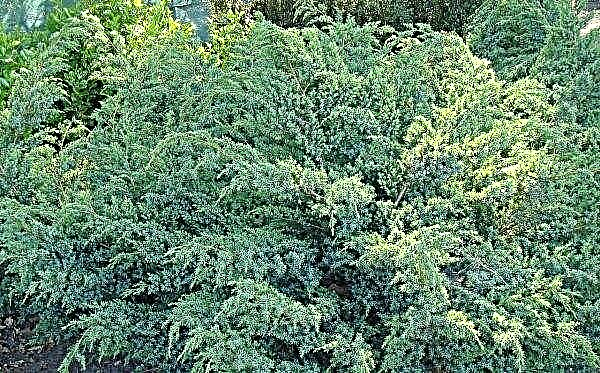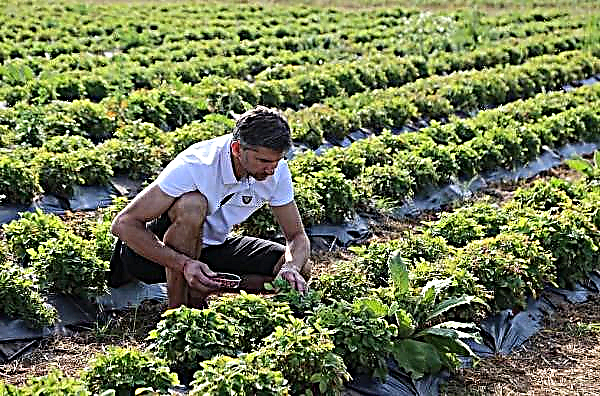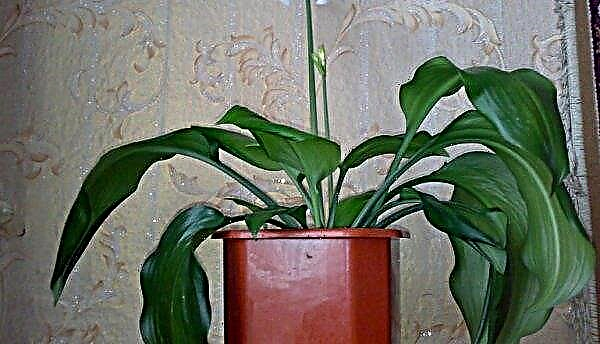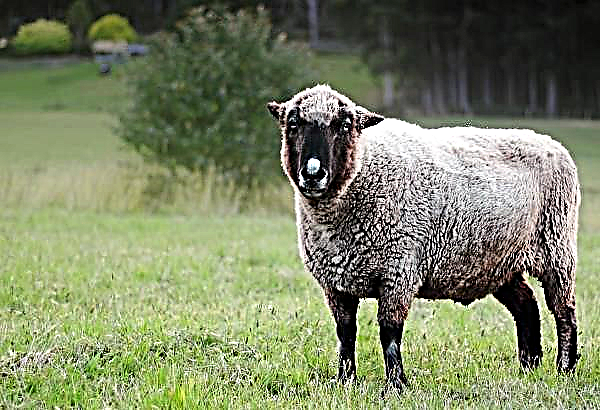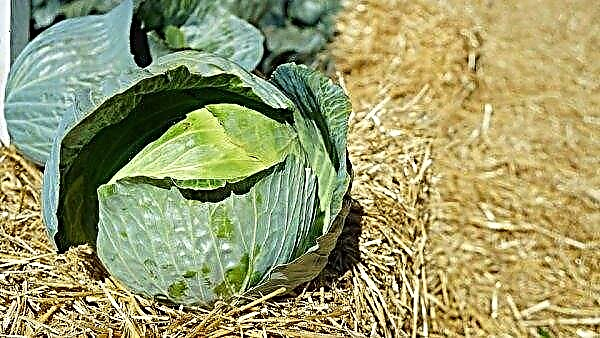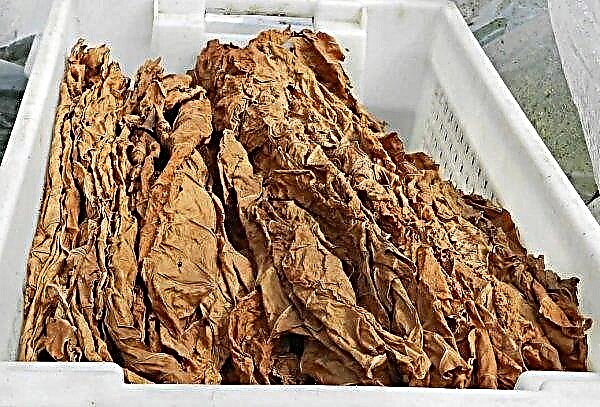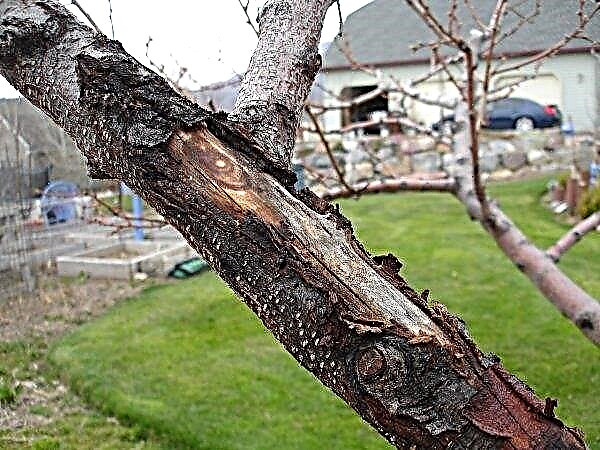If you are looking for a beautiful, but compact indoor flower, then you will definitely be interested in tiger begonia, the most popular species from almost 2,000 varieties of this family. Unusual in shape and color, the leaves of this plant attract the eye, and unpretentiousness in the care will appeal to every grower. Almost everything about tiger begonia — in this article.
Botanical description of the plant
Tiger begonia, or Bauer, is valued for the originality and beauty of spotted leaves with serrated edges. They are much more interesting than its colors. And as soon as the latter appear, flower growers remove them so that the leaves get more strength, because the plant blooms in winter, when the conditions for the growth of the flower are already complicated.
Did you know? Depending on the variety of bauer, they grow to different heights. The smallest of them are no more than 5-10 cm, but there are also specimens stretching up to 2-3 meters.
In appearance, begonia resembles a bush, the leaves and flowers of which grow directly from the roots that lie on the surface of the soil. In height, the plant rarely reaches more than 30 cm.
| Root system | Developed |
| Stem | There is no single, bushy form |
| Leaf shape | Heart-shaped |
| Leaf color | Green spots on a brown background |
| Flower shape | Collected in inflorescence |
| Flower color | Whites |
Necessary conditions and care
This indoor flower is unpretentious in everyday life, therefore it is not difficult to create comfort for it in a home environment. It is enough to choose the right place for its placement, create a suitable temperature regime and water the plant in a timely manner.
Lighting
Without the proper organization of lighting, tiger begonia loses its distinctive coloring, leaves turn pale, and acquire an unnatural elongated shape. In order to prevent such negative transformations, you need to follow simple recommendations:
- avoid direct sunlight;
- give preference to partial shade or diffused lighting;
- place a flower pot on the windowsill, except for the south and west;
- the plant should receive the same amount of light year-round.
Important! Under the influence of direct sunlight, burns will appear on the leaves of the plant.
Temperature mode
Comfortable temperature depends on the season. In the summer period it is + 18 ... + 22 ° С, and in the winter - from + 16 ° С and higher. If the flower is healthy, then it can easily withstand short-term temperature changes. The plant is better at cooling than in the heat.
Air humidity
For begonia, high humidity is important. It is usually provided with pebble pallets that are regularly watered. To retain moisture, you can use other materials:
- peat;
- expanded clay.
Did you know? In the wild, begonia grows on stones, rocky gorges, the roots of old trees.
Creating suitable humidity, take care of the presence of ventilation in the room. This flower does not like stagnation of air, because in such conditions moisture provokes the development of bacteria and various diseases.
Watering
Begonias native to the rainforests of Mexico, Latin America. Hence their love of moisture. It is desirable to water the plant with water at room temperature, but the frequency of watering depends on the microclimate in the room. In the summer, watered more often. If the weather persists for a long time, there is little sunlight, then watering should be temporarily stopped altogether so that the plant can go into a dormant period. If you moisten the soil too often, there is a risk of provoking rotting of the roots. Therefore, before watering, pay attention to the condition of the soil: it should dry to a depth of 1-2 cm. Tiger begonia tolerates periodic drought better than excessive moisture. To ensure timely drainage of water, ensure proper drainage in the pot.
If you moisten the soil too often, there is a risk of provoking rotting of the roots. Therefore, before watering, pay attention to the condition of the soil: it should dry to a depth of 1-2 cm. Tiger begonia tolerates periodic drought better than excessive moisture. To ensure timely drainage of water, ensure proper drainage in the pot.
Important! Water yourself very carefully. Pour water only along the edge of the pot so that water does not appear on the leaves. No need to spray the leaves, otherwise yellow spots may appear on them.
Top dressing
In terms of fertilizer, the flower is not too picky. Conventional complex top dressing for decorative leafy plants will be enough for him. They feed once a month, breeding top dressing twice as much as prescribed in the instructions.
Pruning
Proper and timely pruning allows you to rejuvenate the tiger begonia bush, to form a beautiful crown. It is carried out according to the following rules:
It is carried out according to the following rules:
- in a young plant, reaching a height of 7-8 cm, the tip of the apex is cut off to stimulate the growth of side shoots;
- when these processes extend 10-12 cm, their tops are cut off over the kidney directed to the outside;
- when peduncles appear, they are cut;
- dried leaves and shoots are removed to prevent the development of diseases.
Knoware you eating The tubers of some species of begonias are edible and have a citrus flavor.
Transfer
Regular transplantation is important for tiger begonias. Without fresh soil, the leaves of the plant lose color, shrink, and become painful. When transplanting, remember some nuances:
- young specimens are transplanted every year;
- older plants - every 2 years;
- transplantation is carried out in the spring;
- after the procedure, it is desirable to place the plant in the shade so that it takes root;
- for each transplant, a more capacious pot is taken.

First of all, a drainage of various materials is laid in a flowerpot:
- small pebbles;
- expanded clay;
- sphagnum.
Important! At Tiger begonias have thin and delicate roots that are easy to damage.
It is necessary to take care of the correct soil composition:
- 1 part of sheet soil;
- 1 part of sand;
- 1 part of coniferous soil;
- 1 part of the turf base;
- 1 part humus.
Video: how to transplant a tiger begonia into a new pot
Breeding
Three methods are used to create new bushes:
- seed cultivation;
- division of the bush;
- propagation by stem or leaf cuttings.
In order for the young flower to better take root and later develop healthy, you must follow simple rules:
- Do not take planting material from sick begonias;
- so that the young shoot does not rot, add wood ash or a potassium permanganate solution (weak) to the water / soil.
Did you know? In ancient times, warriors used begonia leaves to polish swords.
Cuttings
In this way, the plant will reproduce quickly. For cuttings, lateral shoots are used, even parts of stems or leaves. They remove all leaves, except 3-4 top. After the workpiece is lowered into moist soil (its composition is described in the transplant section) and put in the shade for the first week. If propagation is carried out using leaves, then they are temporarily lowered into a glass of water to stimulate the appearance of the root system, covered with a film, creating the effect of a greenhouse, a greenhouse. Rooting can take anywhere from a week to 2-3. When creating conditions comfortable for the flower, it will become a completely independent plant after a month.
Rooting can take anywhere from a week to 2-3. When creating conditions comfortable for the flower, it will become a completely independent plant after a month.
Dividing the bush
Reproduction of the bush occurs with the help of root divisions. These are pieces of root that separate during transplantation, or simply segments that protrude above the soil. The places of cuts should definitely be sprinkled with ash, treated with brilliant green or a solution of potassium permanganate, after which it is worth letting them dry for about an hour. The resulting dividends are placed in pots with soil, covered with a film and sent to a shady place for rooting.
Seed cultivation
Surprisingly, it is a fact: begonia seeds are among the smallest in the world: about 30 million seedlings can be grown from 30 g of this seed. To do this, it is enough to lower several seeds in moist soil and give them a week or two for the appearance of the first seedlings. As soon as the planting material sprouts and the first leaves appear, seedlings are planted in separate containers. Such a plant will need at least six months to fully root and grow.
As soon as the planting material sprouts and the first leaves appear, seedlings are planted in separate containers. Such a plant will need at least six months to fully root and grow.
Growing difficulties
Like any other plant, tiger begonia can suffer from diseases or the appearance of pests in violation of the rules for its maintenance.
Important! At the first suspicion of infection, it is worth separating the plant from other flowers.
Disease
If you do not follow the microclimate in the room where the flowers are, there is a risk of provoking the disease. The most common begonia diseases include:
- powdery mildew. You can recognize the ailment by the characteristic white-brown spots that spread in short lines along the leaf plate. And they lead to their appearance of elevated temperature and low humidity. The following preparations “Fitosporin-M”, “Alirin-B” (in the early stages) and “Topaz” will help get rid of powdery mildew;

- gray rot. This disease is caused by excess moisture in the air and soil. Rot is manifested in the form of small gray spots, sticky to the touch. Very soon, the disease affects all large areas of leaves, stem. You can save the plant only by improving the climatic conditions. Affected areas of the flower must be removed, and the remaining ones are treated with a 0.1% solution of Euparen or Fundazole.
Did you know? Begonia is a symbol of North Korea. Her image can be seen on the coat of arms.
Pests
The pests that are most often found on begonias include:
- greenhouse aphid. These small (up to 2.5 mm) insects of green or yellow color live on the lower part of the leaf, they draw the juices from the plant. Their prolonged parasitization on the flower leads to its withering and death. Aphids contaminate the leaf, leaving sugar traces on it. Spraying with a 2-4% solution of laundry soap or 0.1% “Actelikom” will help get rid of the pest;
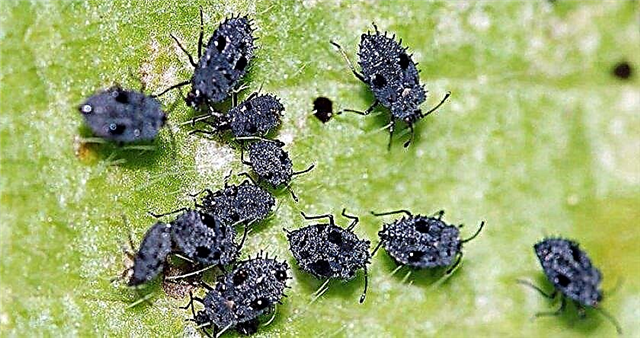
- soft false shield. You can detect insects with yellow-brown backs on all parts of the plant. They leave behind a dark coating. To get rid of pests, take a soft brush (you can use a toothbrush for convenience) and an infusion of garlic (10 g per 1 liter of water). In this way, clean insects, their traces, and then wash them with a solution. Such treatments should be carried out every 2-3 weeks;

- greenhouse thrips. The insect often infects begonias, not only sucking up vital juices, but also propagating on leaves, flower tubers, and soil. To get rid of these dark brown pests and their yellowish larvae, washing the plants with celandine solution (100 g per 1 liter of water) or 0.1% benzophosphate solution will help. Repeat the procedure at least once a week.
Signs and superstitions
Tiger begonia long settled in the houses and apartments of flower growers, and not only. This plant managed to grow with various superstitions:
- believed to bring happiness to the family;
- helps lonely people to find love;
- attracts money to the house;
- able to predict the future: if the plant withers, it is a bad omen;
- fast-growing, healthy begonia testifies to luck and prosperity in the house;
- unexpectedly appearing flowers on a plant are a sign of future replenishment in the family.
Bauer will be a wonderful decoration for any home. This original flower will not take up much space on the windowsill, does not require careful care, and is also able to bring good luck and prosperity (if you believe the signs).




